Benin, a small yet culturally rich country in West Africa, is a land where history, tradition, and natural beauty intertwine. Known as the birthplace of the ancient Kingdom of Dahomey and the home of Voodoo, Benin offers travelers a unique opportunity to explore its deep-rooted cultural heritage and stunning landscapes. With a population of around 12 million, this coastal nation is a gateway to understanding West Africa’s historical significance and vibrant traditions.
Table of Contents
Geography
Benin covers an area of approximately 114,763 square kilometers, making it one of the smaller countries in West Africa. It is bordered by Togo to the west, Nigeria to the east, Burkina Faso and Niger to the north, and the Atlantic Ocean to the south. The country’s geography is diverse, ranging from coastal plains in the south to savannahs and semi-arid lands in the north. Benin’s tropical climate supports a variety of ecosystems, including dense forests, wetlands, and savannahs, which are home to a rich diversity of flora and fauna.
States of Benin
Benin is divided into 12 administrative departments, not states. These departments function similarly to states in other countries and are used for administrative purposes.
| No | Department | Capital |
|---|---|---|
| 1 | Alibori | Kandi |
| 2 | Atacora | Natitingou |
| 3 | Atlantique | Cotonou |
| 4 | Borgou | Parakou |
| 5 | Collines | Dassa-Zoumé |
| 6 | Couffo | Lokossa |
| 7 | Donga | Djougou |
| 8 | Littoral | Cotonou |
| 9 | Mono | Lokossa |
| 10 | Ouémé | Porto-Novo |
| 11 | Plateau | Bonou |
| 12 | Zou | Abomey |
History
The history of Benin is deeply connected to the rise and fall of powerful kingdoms and the impact of the transatlantic slave trade. One of the most significant kingdoms was the Kingdom of Dahomey, which emerged in the 17th century. Dahomey was known for its powerful military, intricate societal structure, and unique cultural practices, including the veneration of Vodun (Voodoo) deities. The kingdom was also infamous for its involvement in the slave trade, where captives from wars were sold to European traders.
The Kingdom of Dahomey reached its peak in the 18th and 19th centuries, becoming a major power in the region. The Dahomean kings, known as the Ahosu, were revered as both political and spiritual leaders. The kingdom was known for its royal palaces, elaborate ceremonies, and the presence of the Dahomey Amazons, an all-female military regiment that played a crucial role in the kingdom’s defense. However, the kingdom’s involvement in the slave trade brought it into conflict with European powers, particularly the French.
In the late 19th century, Dahomey became a focal point of French colonial expansion in West Africa. The kingdom resisted French encroachment, leading to several wars between the Dahomeans and the French. Despite fierce resistance, the kingdom was eventually defeated in 1894, and Dahomey was annexed as part of French West Africa. The region remained under French control until Benin gained independence on August 1, 1960. The post-independence period saw political instability, with a series of military coups and changes in government, but Benin has since transitioned to a stable democracy.
Top Ten Must-Visit Destinations
1. Cotonou

Cotonou, the largest city and economic hub of Benin, is a vibrant metropolis where modernity meets tradition. The city offers a mix of markets, colonial architecture, and cultural attractions. The Dantokpa Market, one of the largest open-air markets in West Africa, is a must-visit for those interested in experiencing the local way of life. Cotonou is also home to the Fondation Zinsou, a contemporary art museum showcasing works by African artists.
2. Abomey

Abomey, the historical capital of the Kingdom of Dahomey, is a UNESCO World Heritage site and a treasure trove of history. The Royal Palaces of Abomey, where the Dahomean kings once ruled, are now a museum complex that offers insight into the kingdom’s history, culture, and traditions. The site includes the tombs of the kings, ceremonial objects, and intricate bas-reliefs depicting the kingdom’s history.
3. Ouidah

Ouidah is a town of great historical and cultural significance, known as the spiritual heart of Voodoo. The town was also a major port during the transatlantic slave trade. Visitors can explore the Ouidah Museum of History, which is housed in an old Portuguese fort, and the Route des Esclaves, a trail that traces the path taken by enslaved Africans to the ships that would take them to the Americas. The town is also home to the annual Voodoo Festival, a vibrant celebration of Benin’s spiritual traditions.
4. Ganvié
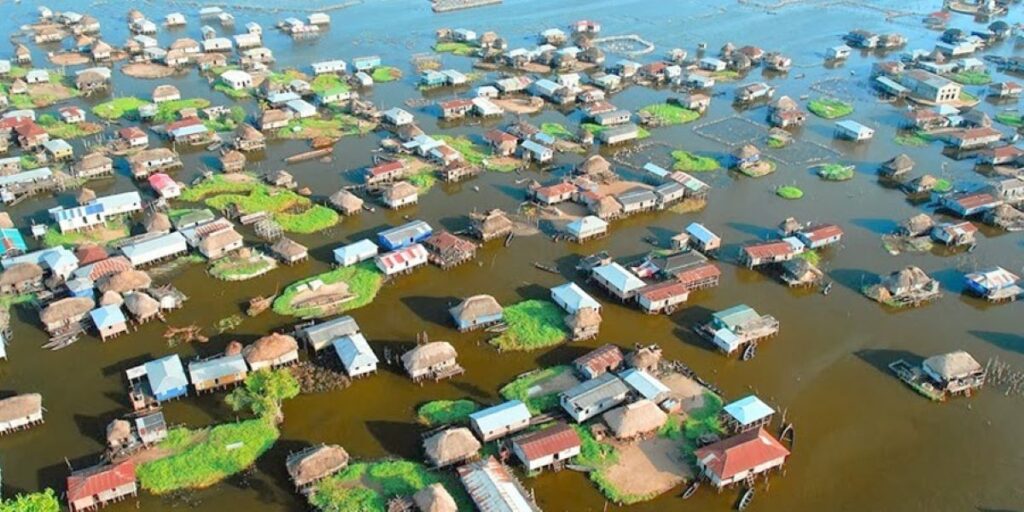
Ganvié, often referred to as the “Venice of Africa,” is a remarkable stilt village located on Lake Nokoué. Founded by the Tofinu people in the 16th century as a refuge from slave traders, Ganvié is one of the largest lake villages in Africa. The village is built entirely on stilts, and visitors can explore it by canoe, witnessing the unique way of life of its inhabitants. The serene atmosphere and the beauty of the floating village make Ganvié a must-visit destination.
5. Pendjari National Park
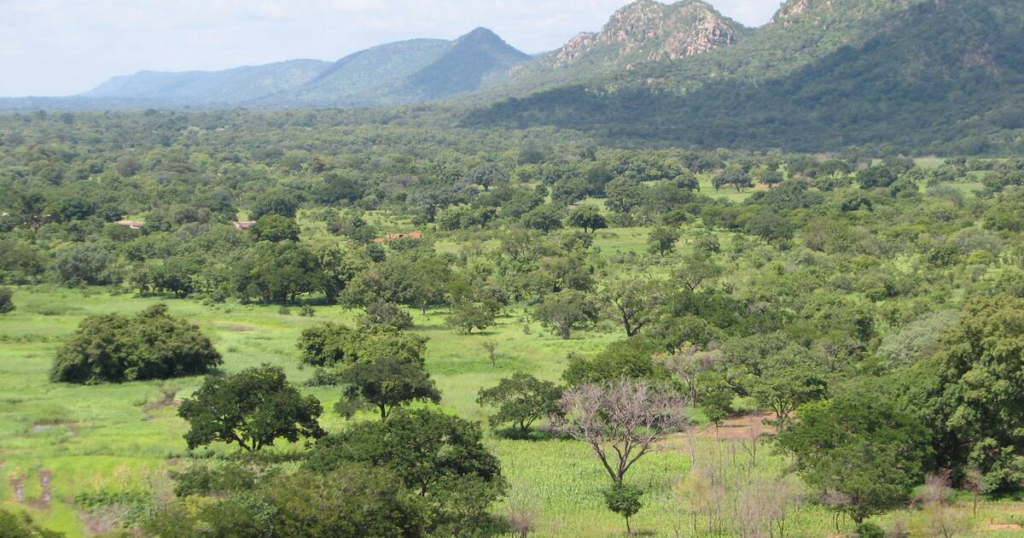
Pendjari National Park is one of West Africa’s last remaining wilderness areas and a UNESCO Biosphere Reserve. Located in the northern part of Benin, the park is home to a wide variety of wildlife, including elephants, lions, cheetahs, and hippos. The park’s diverse landscapes, ranging from savannahs to forests, offer excellent opportunities for wildlife viewing and birdwatching. Pendjari is part of the larger W-Arly-Pendjari (WAP) complex, which is one of the most important conservation areas in West Africa.
6. Porto-Novo
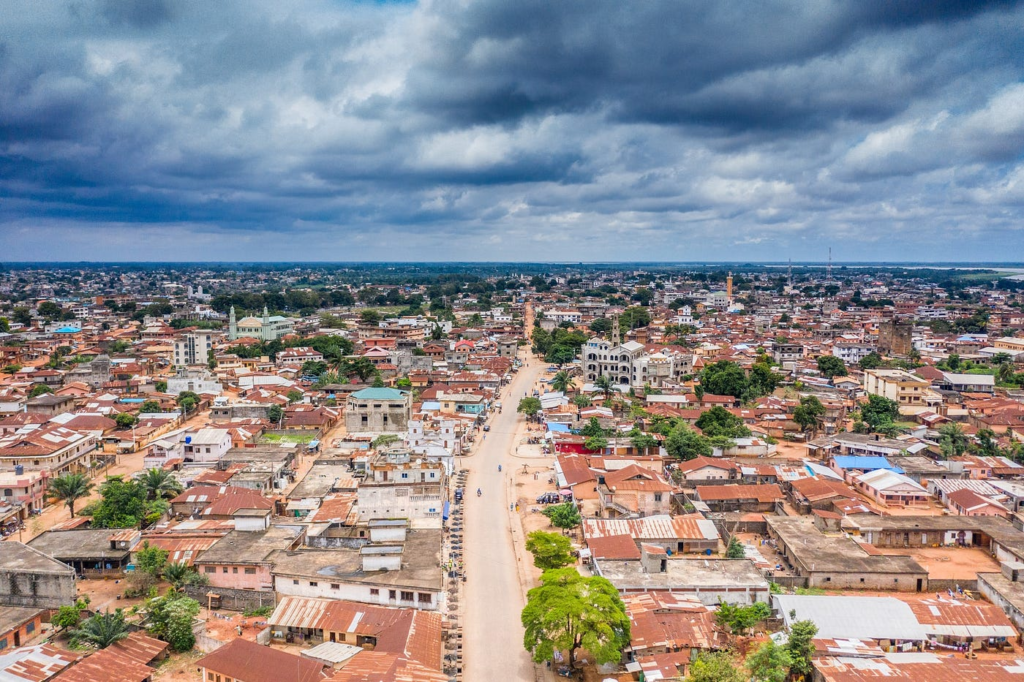
Porto-Novo, the official capital of Benin, is a city steeped in history and culture. The city’s colonial architecture, traditional palaces, and museums offer a glimpse into Benin’s past. The Ethnographic Museum of Porto-Novo is particularly noteworthy, as it houses a vast collection of artifacts related to the country’s history, culture, and religions. Visitors can also explore the Grande Mosquée, a striking example of Afro-Brazilian architecture.
7. Natitingou
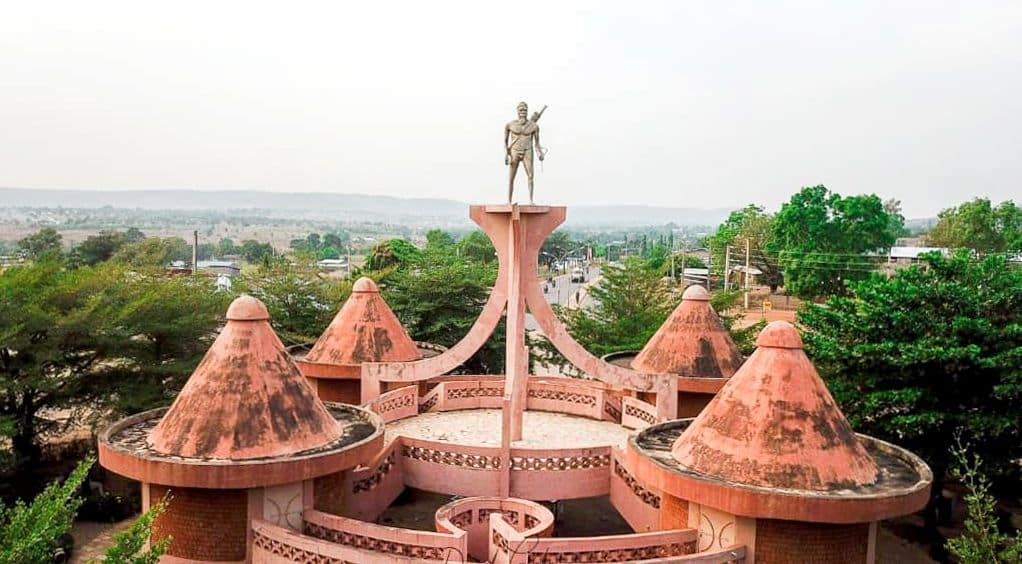
Natitingou is a picturesque town located in the Atakora Mountains in northern Benin. The town is known for its scenic beauty and traditional Tata Somba houses, which are unique to the region. These fortress-like houses are built with mud and have flat roofs, often used for drying crops. Natitingou serves as a gateway to the nearby Tanougou Falls and the Pendjari National Park, making it an ideal base for exploring the natural beauty of northern Benin.
8. Savalou
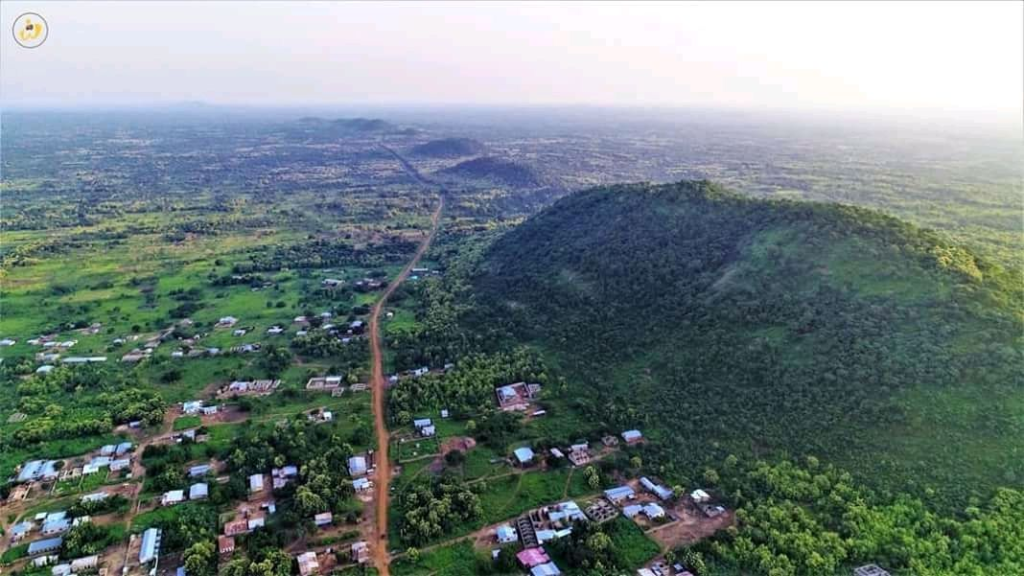
Savalou is a town in central Benin known for its rich cultural heritage and traditional festivals. The town is famous for the annual Yam Festival, which celebrates the harvest of yams, a staple food in the region. During the festival, locals dress in traditional attire, perform dances, and offer thanks to the gods for a bountiful harvest. Savalou is also home to the Savalou Royal Palace, where visitors can learn about the history and traditions of the local kingship.
9. Boukoumbé
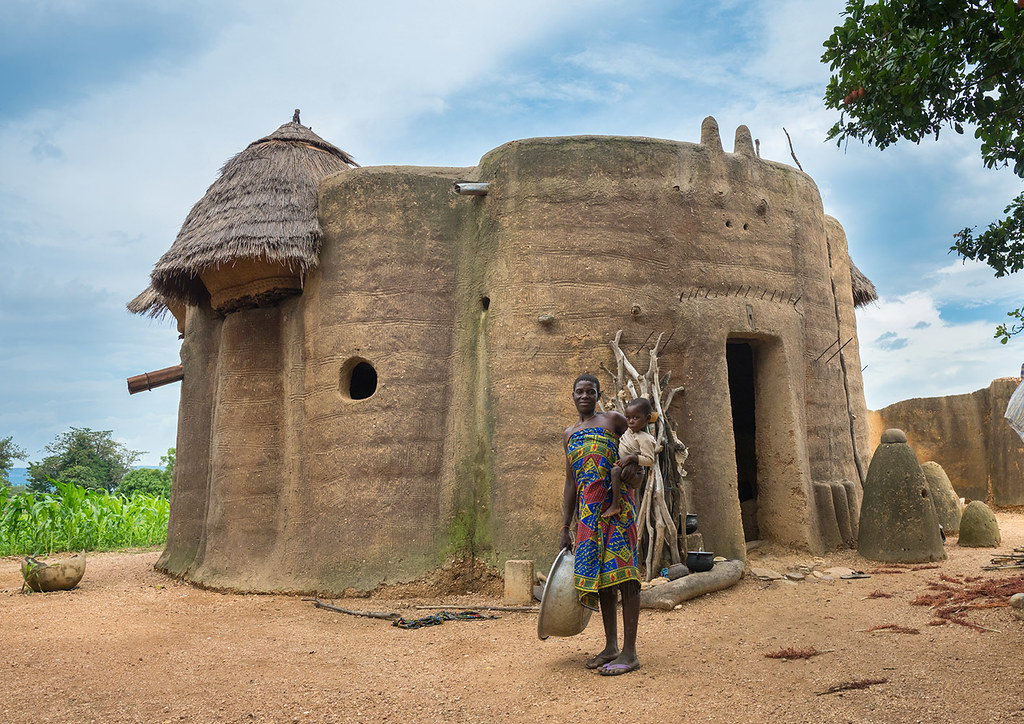
Boukoumbé, a town in northwestern Benin, is known for its vibrant culture and traditional crafts. The town is a center for the production of traditional pottery and weaving, and visitors can observe artisans at work and purchase handmade souvenirs. Boukoumbé is also a gateway to the nearby Atakora Mountains and the Koutammakou UNESCO World Heritage site, which is home to the Batammariba people and their distinctive clay tower-houses.
10. Tanougou Falls
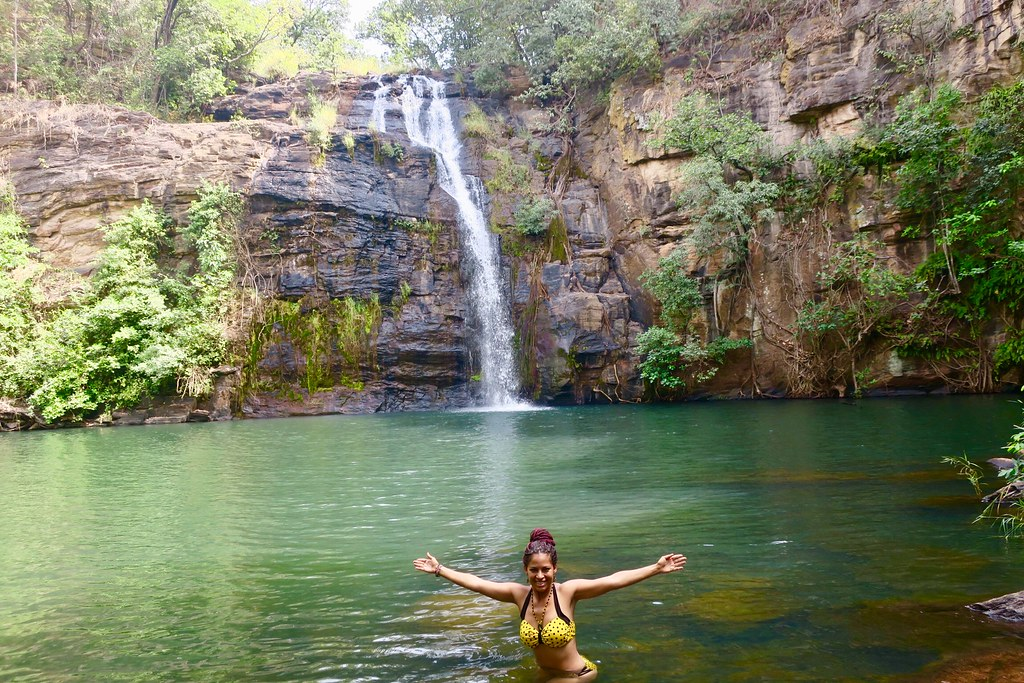
Tanougou Falls, located near the Pendjari National Park, is one of the most beautiful natural attractions in Benin. The waterfall cascades down rocky cliffs into a clear pool, surrounded by lush vegetation. It is a popular spot for picnicking and swimming, offering a refreshing break from the heat of the savannah. The falls are a perfect example of Benin’s unspoiled natural beauty.
Culture
Benin’s culture is a vibrant tapestry woven from the traditions of its various ethnic groups and historical influences. The Fon, Adja, Yoruba, and Bariba are some of the major ethnic groups in the country, each contributing to the rich cultural diversity. The Fon people, who are the largest ethnic group, were the founders of the Kingdom of Dahomey and have a significant influence on Beninese culture, particularly in the practice of Vodun (Voodoo).
Vodun is not only a religion but also a way of life in Benin, deeply rooted in the country’s traditions and daily practices. The religion revolves around the worship of spirits and ancestors, with rituals that include offerings, dance, and music. Vodun is recognized as an official religion in Benin, and its influence can be seen in the country’s festivals, art, and social practices.
Benin’s cultural heritage is also reflected in its music, dance, and art. Traditional music is characterized by the use of drums, percussion instruments, and call-and-response singing. The Agbadja and Tchinkoumé dances are popular traditional dances performed during festivals and ceremonies. Beninese art is known for its intricate metalwork, wood carving, and pottery, with many pieces depicting spiritual themes and historical events.
Festivals
Benin is home to a variety of festivals that celebrate its cultural heritage and religious traditions. The most famous of these is the Voodoo Festival, held annually on January 10th in Ouidah. This vibrant celebration attracts thousands of participants and tourists who come to witness the colorful ceremonies, music, and dances dedicated to the Vodun spirits. Another significant festival is the Yam Festival in Savalou, which marks the end of the harvest season and is celebrated with traditional dances, music, and feasting.
Economy
Benin’s economy is primarily based on agriculture, with the majority of the population engaged in farming. The country’s main agricultural products include cotton, maize, cassava, and yams. Cotton is the most important cash crop and the leading export, earning Benin the nickname “the Cotton Republic.”
In addition to agriculture, Benin has a growing service sector, particularly in trade and transportation, due to its strategic location as a transit hub for landlocked neighboring countries. The government is also working to develop the country’s infrastructure and attract foreign investment to diversify the economy.
Cuisine
Beninese cuisine is a reflection of the country’s agricultural bounty and cultural diversity. Staple foods include maize, rice, beans, cassava, and yams, often served with sauces made from vegetables, fish, or meat. Popular dishes include “pâte,” a dough-like dish made from maize or cassava flour, and “amiwo,” a spicy cornmeal dish. Grilled fish, known as “akassa,” and “peanut sauce” are also common. Benin is known for its vibrant street food culture, where vendors sell snacks such as “galettes” (fried dough) and “akassa” (fermented maize pancakes).
Top Eight Most Famous Food
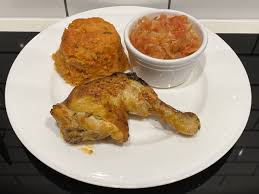


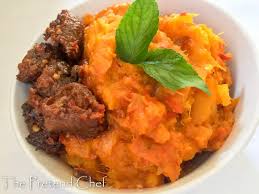
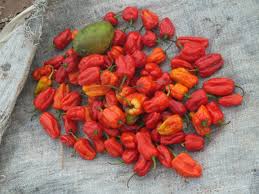
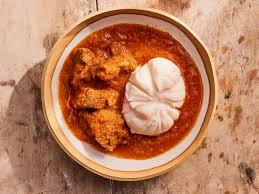


Interesting Facts
- Benin is the birthplace of Voodoo, a religion that has influenced many cultures around the world.
- The Royal Palaces of Abomey are UNESCO World Heritage sites.
- Benin is one of the most stable democracies in Africa.
- The national language of Benin is French, but many local languages are widely spoken.
- The flag of Benin was adopted upon independence and symbolizes the country’s unity and aspirations.
- Benin has a population of approximately 12 million people.
- The country is a member of the African Union and the United Nations.
- The Ouidah Museum of History was once a Portuguese slave fort.
- Benin has a diverse landscape that includes beaches, forests, and savannahs.
- The Pendjari National Park is one of the best places in West Africa to see wildlife.
Conclusion
Benin is a land of deep-rooted traditions, historical significance, and natural beauty. From the ancient palaces of Abomey to the tranquil waters of Ganvié, the country offers a wealth of experiences for travelers seeking to explore the heart of West Africa. With its rich cultural heritage, vibrant festivals, and stunning landscapes, Benin is a destination that captivates the imagination and leaves a lasting impression.

